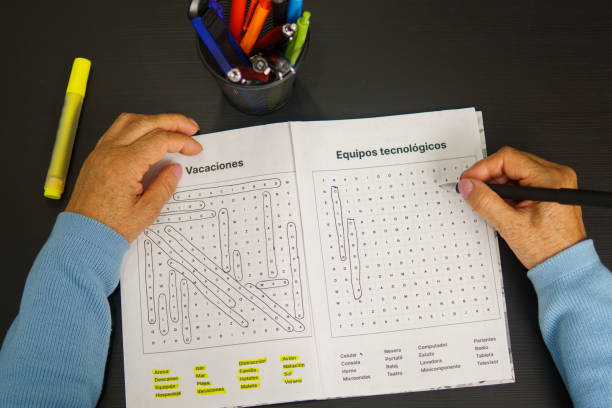I’m ready to help you rewrite your article, but I’ll need the text you want re‑written. Could you please paste the article (or the portion you’d like transformed) here? Once I have it, I’ll spin it into a fresh, engaging version for you.
Word Search Puzzles for Kids: An Entertaining and Educational Activity
Why Word‑Search Puzzles Are a Kid‑Friendly Brain‑Boosting Bonanza
It’s easy to think of a word‑search as just a sweet pastime. But that’s only scratching the surface. When you pop a kid’s fingertips onto a grid of letters, you’re actually unlocking a treasure trove of learning opportunities—without they even realizing it.
1. Vocabulary – the Treasure Chest
Every word you find is a new word to wipe from the blackboard of “I don’t know.” The fun of spotting chimpanzees or nebulae nudges them into a memory palace that will later help them write essays, ace vocabulary tests, and, frankly, brag about their knowledge at the next family game night.
2. Spelling – the Old‑School Practice, Modern‑Style
By repeatedly laying eyes on correctly spelled words, kids internalise the word tails they’ll need for school essays or clumsy online chats. Think of this as a “practice makes perfect” exercise for letters—they learn the rhythm of spelling, one letter at a time.
3. Focus – The ‘“Can’t Touch That”’ Skill
Looking over a grid of scrambled letters requires concentration that, frankly, outpaces most of the scrolling habits kids develop. Each word hunts demands split attention: “I’ve been looking for this word, but I can’t let it slip out of my mind.” That’s concentration training with a side of fun.
4. Critical Thinking and Problem‑Solving – The Hidden Roadmap
It’s not just about slapping a diagonal dot at the end of a word. Kids must strategise: “Are those letters heading north‑east or backwards?” Considering potential paths unleashes logical thinking—like a miniature detective chasing clues.
5. Memory – Play on the Answer Deck
As they track which words have been claimed, children engage their short‑term recall. A single puzzle can bolster memory bandwidth by testing their ability to instantly remember a list of items, which later translates into faster learning in language, science, and even math.
Choosing the Right Puzzle: From Simple to ‘Bubbles of Genius’
• Small Grid, Big Smiles – Beginner Edition
For the youngest explorers, a 10×10 tile with only eight horizontal or vertical words is the perfect entry point. No backwards, no diagonals. You’re building confidence—one squeaky draw‑down at a time.
• Themed Treasure Hunts
Animals, seasons, superheroes—when the grid reflects a child’s favourite world, engagement spikes. They’ll be hunting for hydra and phoenix without ever noticing how their eyes sharpen.
• Challenge Mode – The Puzzle for the Prodigy
Older kids thrive on a bigger grid, extra words, tricky diagonals, and reversed spells. The heightened difficulty is an invitation to stronger focus and more creative problem‑solving.
• Interactive Digital Editions
Tablets, phones, laptops – a digital style lets you add timers, hints, or progression markers. Kids get instant feedback; parents can simply watch with a smile. And those glowing screens? They’re the perfect backdrop for after‑school study marathons.
• Timed Trials – Racing Against the Clock
Who doesn’t love a good race? A 5‑minute countdown injects pressure—specifically, a healthy dose of “think fast” that’s vital for higher‑stakes tests.
Gamification: Making Word‑Search Adventures Even More Epic
• Daily Lesson Reinforcements
After covering a geography unit, create a grid with Amazon and Polaris. Mixing new knowledge with the puzzle-review tradition keeps your child’s study sessions lively.
• Custom Puzzle Power‑Up
Let your child craft their own grid—pick the theme, decide the word list. This fosters creativity and gives them ownership over the learning process.
• Family Day – Shared Puzzle Time
Nothing beats a dad‑and‑kid puzzle sprint. Put a scoreboard on the wall and watch the competitive flame flicker. Bonus: you’ll be learning a new word or two yourselves!
• Combine With Art or Writing
Once the puzzle’s solved, ask them to sketch the words or write a story containing them. The two‑step exercise solidifies recall while letting imagination run free.
• Reward the Hero
Stick a small sticker, hand a tiny treat, or slap a certificate of completion on the corner. Rewards make the learning feel like a heroic journey rather than a chore.
Classroom Integration: The Teacher’s Toolbox
Teachers can pop a word‑search as a post‑lesson recharge or as a field‑trip pre‑test. For instance, sprinkling meteor and comet words after a solar‑system unit reinforces key terms in a calm, enjoyable way.
These puzzles serve not only as a quick break but also as an active rehearsal of vocabulary, spelling, and concept retention. And they’re just as fun for the teacher as for the student.
Wrap‑Up: The Ultimate Kid‑Friendly Brain Center
Long story short: word‑search puzzles let kids turn letter grids into learning lab adventures. Increased vocabulary, improved spelling, heightened focus, boosted critical thinking, and better memory—all wrapped in an accessible, entertaining package. Whether you’re designing a classroom drill, a family game night, or a customizable digital on‑go activity, word‑searches are the child‑friendly brain‑building hack you need.
Ready to turn your kid’s next puzzle session into a multi‑skill extravaganza? Grab a sheet, pick a theme, and let the word‑search journey begin!




